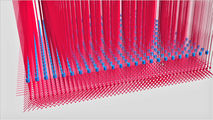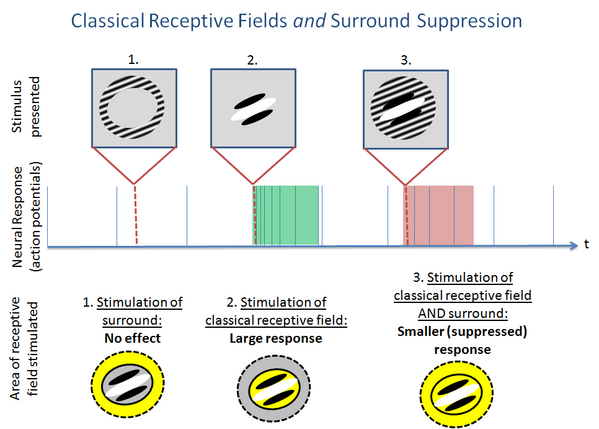Modelling perceptual deficits in neurological and psychiatric disorders
Project Description

Over the last decades a large amount of cellular/molecular level abnormalities have been identified in the brain of patients suffering from neurological and psychiatric disorders (e.g. schizophrenia). However, this neurobiological knowledge has not translated into effective medical treatments. This is mainly due to the fact that we cannot convincingly link these abnormalities to behavioural/sensory deficits or symptoms. Computational modelling is a powerful tool to bridge this gap.
We build computational models of sensory information processing in the human brain and its impairments in disorders. The detailed nature of these allows for an incorporation of cellular/molecular level abnormalities as found in patients and, therefore, enables us to investigate the underlying neuronal mechanisms. Furthermore, these computational models can be used to develop and test possible medical treatments.
We focus on two sensory phenomena: centre-surround suppression (i.e. the mutual inhibition of a central stimulus and its surround) and oscillatory activity (i.e. organised rhythmic behaviour of populations of neurons).
Collaborations
Furthermore, we are actively involved in the collaborative development and sharing of computational models of neural systems (see www.opensourcebrain.org), where we serve as contributors and scientific coordinators on the following projects:
- "Engaging distinct oscillatory neocortical circuits" (see www.opensourcebrain.org/projects/vierlingclaassenetal2010)
- "Primary auditory cortex network" (see www.opensourcebrain.org/projects/acnet2)
- "Piriform cortex pyramidal neuron" (see www.opensourcebrain.org/projects/piriformcortexvanier)
Publications
2014
Coding in the olfactory system: linking realistic and abstract models, 2014. pp. P10.
Computational Multifactoriality in a Detailed Neural Network Model Resembling Centre-Surround Suppression Deficits in Schizophrenia, 2014.
2013
Center-Surround Interactions in a Network Model of Layer 4C$\alpha$ of Primary Visual Cortex, 2013.
Cortical levels of GABA in patients with panic disorder are associated with the strength of metacognitive beliefs, 2013.
2012
Spike-timing Dependent Plasticity Facilitates Excitatory/Inhibitory Disbalances in Early Phases of Tinnitus Manifestation, 2012.
2011
Early Signs of Tinnitus in a Simulation of the Mammalian Primary Auditory Cortex, 2011. pp. P383.
Neurochemical Mechanisms of Perceptual Deficits in Schizophrenic Patients -- A Spiking Neural Network Approach: BC11 : Computational Neuroscience Neurotechnology Bernstein Conference & Neurex Annual Meeting, 2011.
Towards Realistic Receptive Field Properties in a Biologically Inspired Spiking Network Model of the Mammalian Primary Visual Cortex: BC11 : Computational Neuroscience Neurotechnology Bernstein Conference & Neurex Annual Meeting, 2011.
2010
Context Integration in Visual Processing: A Computational Model of Center-Surround Suppression in the Visual System, 2010. pp. P100.

- Research
- SonoBox: A Robotic Ultrasound System for Pediatric Forearm Fracture Diagnosis
- Robotics Laboratory (RobLab)
- OLRIM
- MIRANA
- Robotik auf der digitalen Weide
- KRIBL
- Ultrasound Guided Radiation Therapy
- Digitaler Superzwilling: Projekt TWIN-WIN
- - Finished Projects -
- High-Accuracy Head Tracking
- Neurological Modelling
- Modelling of Cardiac Motion
- Motion Compensation in Radiotherapy
- Navigation and Visualisation in Endovascular Aortic Repair (Nav EVAR)
- Autonome Elektrofahrzeuge als urbane Lieferanten
- Goal-based Open ended Autonomous Learning
- Transcranial Electrical Stimulation
- Treatment Planning
- Transcranial Magnetic Stimulation
- Navigation in Liver Surgery
- Stereotactic Micronavigation
- Surgical Microscope
- Interactive C-Arm
- OCT-based Neuro-Imaging

